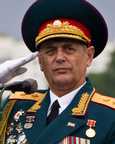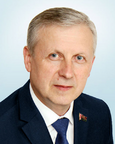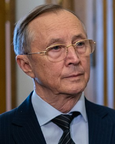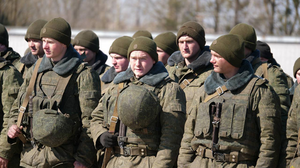Itielia
This article is incomplete because it is pending further input from participants, or it is a work-in-progress by one author. Please comment on this article's talk page to share your input, comments and questions. Note: To contribute to this article, you may need to seek help from the author(s) of this page. |
The People's Republic of Itielia Народна Республика Итъелия | |
|---|---|
| Anthem: "Red Sun Over Azure Sea" | |
| Capital and largest city | Vetromest |
| Official languages | Itielian |
| Ethnic groups (2020) |
|
| Religion (2020) |
|
| Demonym(s) | Itielian |
| Government | Unitary Marxist-Leninist single-party socialist republic |
| Roman Tkatshyuk | |
| Foma Simonis | |
| Alexander Stasiuk | |
| Legislature | Supreme Congress/State Council |
| Formation | |
| 1042 | |
| 1944-1945 | |
| 1st June 1945 | |
| Area | |
• Total | 0 km2 (0 sq mi) |
• Water (%) | N/A |
| Population | |
• 2022 estimate | 88,567,000 |
• 2020 census | 87,105,672 |
• Density | 0/km2 (0.0/sq mi) |
| GDP (PPP) | 2020 estimate |
• Total | $2.629 Trillion |
• Per capita | $30,182 |
| GDP (nominal) | 2020 estimate |
• Total | $801 Million |
• Per capita | $9,204 |
| Gini (2020) | 29.5 low |
| HDI (2020) | very high |
| Currency | Itielian cervonec (ICR) |
| Time zone | UTCx (+N) |
• Summer (DST) | UTCx (+x) |
| Date format | dd-mm-yyyy |
| Driving side | left |
| Calling code | +54 |
| ISO 3166 code | IT |
| Internet TLD | .itl |
The People's Republic of Itielia(Itielian: Народна Республика Итъелия), commonly known as Itielia (Itielian: Итъелия), is a country in Abos. Located on the western edge of the continent, it covers NNNNN. Itielia borders Niagara to the north.
The earliest human activity on the territory are known since Late Palaeolithic period.
Itielia is member of N, N, and N.
Etymology
History
Prehistory
Early History
Baptism of Itielia and Middle Ages
Nirin Dynasty
Turbulent Years (1864-1893)
Itielian Bourgeois Revolution (1893)
Restoration (1893-1926)
Venim Regime (1926-1944)
Great Itielian Popular Revolution and the Civil War (1944-1945)
20th Century
21st Century
Geography
Climate
Environment
Politics and Government
Itielia is Unitary Marxist-Leninist single-party socialist republic with the leading role of the Communist Party of Itielia enshrined in the constitution. The Government is officially committed to socialism, nevertheless foreign observers have described the government as authoritarian and corporatist.
In the constitution, the Communist Party of Itielia is described as "leading and guiding institution of the people, vanguard of the working masses, highest form of political organisation". The Party holds ultimate authority over state and government, which is itself governed by the Central Committee. Only candidates endorsed by the Party are allowed to contest elections to the Supreme Congress (which are in most cases effectively unopposed). The Party exercises significant political control over all branches of the government, military, and public industry.
Government
The Socialist Constitution of Itielia establishes the Supreme Congress as the highest body of state power. The Congress conveys once a year to decide upon the important matters of policy. It elects the State Council as permanent legislature, which then elects the Council of Ministers. Chairman of the State Council acts as titular head of state. The Chairman of the Council of Ministers (informally referred as Premier) is head of government, who presides over the Council of Ministers made of five deputy premiers and heads of ministries and government departments. The General Secretary ofthe Communist Party of Itielia is de-facto leader of Itielia and leader of the Party. As a rule, General Secretary concurrently holds position of the Chairman of the Council of Defence, making the holder both leader of the party and commander-in-chief.
Military
Foreign Relations
Itielia develops foreign relations with all countries regardless of their political or economic system, based on the principle of peaceful co-existance.
Human Rights
Administrative Divisions
Economy
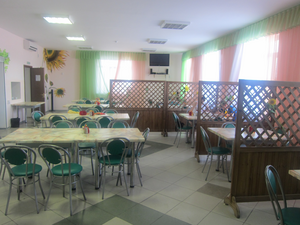
Agriculture
Industry
Science and technology
Tourism
Infrastructure
Energy
Transport
Water supply and sanitation
Demographics
Education




